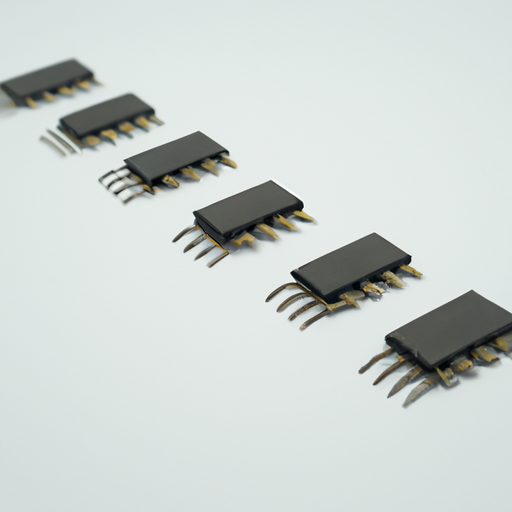Integrated circuits (ICs) are a crucial component in modern electronics, serving as the building blocks for a wide range of devices, from smartphones and computers to medical equipment and automotive systems. These tiny chips contain a complex network of components and modules that work together to perform specific functions. In this article, we will explore the various components and modules that make up an integrated circuit and discuss their roles in the overall functionality of the chip.

One of the key components found in an integrated circuit is the transistor. Transistors are semiconductor devices that act as switches or amplifiers, controlling the flow of electrical current within the circuit. They are essential for performing logic operations and signal processing functions in digital circuits. Transistors are typically made from silicon, a common semiconductor material that is widely used in the electronics industry.
Another important component in an integrated circuit is the resistor. Resistors are passive electronic components that limit the flow of electrical current in a circuit. They are used to control the voltage and current levels within the circuit, ensuring that the components operate within their specified limits. Resistors are typically made from materials such as carbon or metal film, which have specific resistance values that determine their effectiveness in a circuit.
Capacitors are also commonly found in integrated circuits, serving as energy storage devices that store electrical charge. Capacitors are used to filter out noise and stabilize voltage levels within the circuit, ensuring smooth and reliable operation. They are made from two conductive plates separated by a dielectric material, which stores the electrical charge when a voltage is applied across the plates.
Diodes are another important component in integrated circuits, serving as one-way valves for electrical current. Diodes allow current to flow in only one direction, blocking it in the opposite direction. They are used to rectify AC signals into DC signals, protect circuits from reverse voltage, and perform signal modulation and demodulation functions. Diodes are typically made from semiconductor materials such as silicon or germanium.
In addition to these basic components, integrated circuits also contain a variety of specialized modules that perform specific functions within the circuit. These modules can include logic gates, memory cells, analog-to-digital converters, and power management circuits, among others. Each module is designed to perform a specific task, such as processing data, storing information, or regulating power, and is interconnected with other modules to form a complete system.
Logic gates are fundamental building blocks in digital circuits, performing basic logic operations such as AND, OR, and NOT. These gates are used to process binary data and perform arithmetic and Boolean operations, enabling the circuit to perform complex calculations and decision-making tasks. Logic gates are typically made from transistors and other semiconductor components, which are interconnected to form the desired logic function.
Memory cells are another important module found in integrated circuits, serving as storage devices for digital data. Memory cells can be volatile, such as dynamic random-access memory (DRAM), which requires power to retain data, or non-volatile, such as flash memory, which retains data even when power is removed. Memory cells are used to store program instructions, data files, and other information needed for the operation of the circuit.
Analog-to-digital converters (ADCs) are modules that convert analog signals, such as sound or temperature, into digital data that can be processed by the circuit. ADCs are essential for interfacing with the outside world, enabling the circuit to interact with sensors, displays, and other analog devices. ADCs typically consist of a series of comparators, registers, and digital logic circuits that convert the analog signal into a binary representation.
Power management circuits are modules that regulate the voltage and current levels within the circuit, ensuring that the components operate within their specified limits. These circuits can include voltage regulators, current limiters, and power switches that control the flow of electrical power to the various components. Power management circuits are essential for maximizing the efficiency and reliability of the circuit, while minimizing power consumption and heat generation.
In conclusion, integrated circuits contain a complex network of components and modules that work together to perform specific functions within the circuit. From transistors and resistors to logic gates and memory cells, each component plays a crucial role in the overall functionality of the chip. By understanding the various components and modules found in an integrated circuit, engineers and designers can create more efficient and reliable electronic devices that meet the demands of today's technology-driven world.